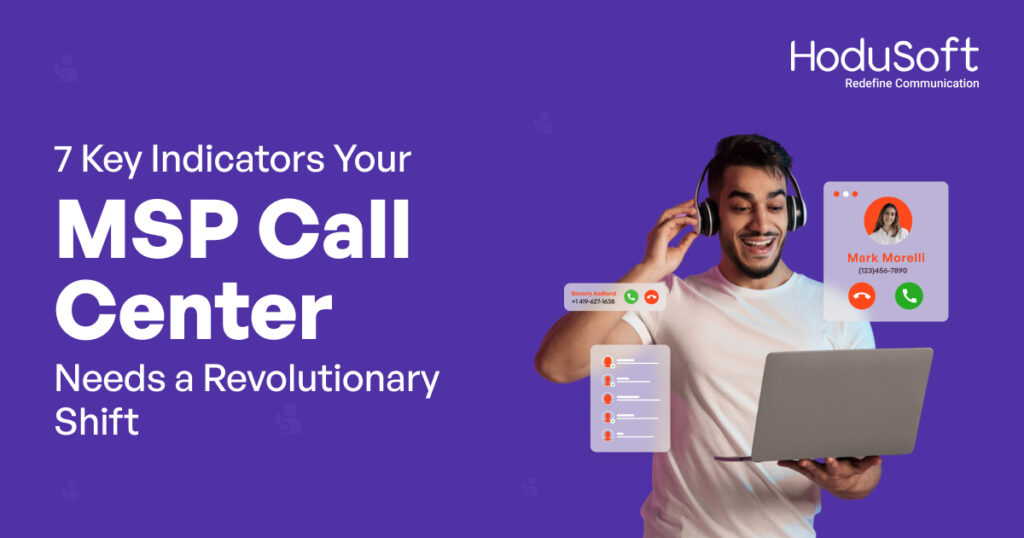What Are the Top 16 Call Center Features you Need to Know in 2022?
With the pandemic, call centers had to suddenly equip themselves to handle a plethora of queries as the nature of interactions changed. Along came the new struggles for call centers such as adjusting to remote work setups, technology adaptation challenges, and trying to stay afloat and keep the numbers up amidst financial upheaval. As the customer support function evolves, so do call center software features. It is difficult, if you are not an industry insider, to keep a tab on all the latest developments and know which call center tools are relevant for today’s customers.
What do customers expect?
Customer experience is the only differentiator, and the quality of your customer service can either make or break your business. Customer service and bettering them are among the top priorities for organizations.
However, it’s easier said than done. With demanding millennials and Gen Z, the customer expectation has changed and players in the call center business need to up their game to keep up with the times.
Dive in to understand which call center features can help you in this competitive business environment.
Most important call center features for 2022
#1. Analytics
First call resolution, average handling time, and agent idle time have become the top metrics of concern for call center leaders these days. Mapping customer journeys through a single dashboard in real-time and generating custom reports can go a long way in adding value to your brand. Furthermore, advanced predictive analytics can provide insights that can assist sales-based customer service providers in identifying the best sales and retention opportunities. These metrics are transformed into meaningful feedback that can help in decision-making by call centers using data analytics tools. Additionally, some call centers have implemented quality assurance software to measure their performance, mainly with customer reports.
#2. Omnichannel Communication
The majority of customers today own more than one device. People expect to be able to interact with business in a variety of ways like social media, via live chat, SMS, over the phone, and more. Omnichannel communication ensures that customers receive a personalized and consistent experience no matter the channel they use.
Omnichannel communication aims to standardize customer service delivery by unifying customer communications. The goal is to ensure seamless and consistent interactions across all devices and channels for customers. By doing so, businesses can better understand their customers. Together, these factors help resolve customer problems more quickly. The customer won’t have to repeat their concerns, and the agent will be in a better position to resolve the issue.
#3. Self Service Tools
DIY (do it yourself) is in vogue and keeping with the trend the customers are increasingly opting for self-service. With respect to solving their issues, customers have developed a strong preference for convenience and independence. These are the features offered by self-service tools.
It is more likely that the customers will use the company’s resources if they find clarifications or answers to quick questions. This shortens the wait time for callers. As a result, agents have more time to deal with complex issues.
Read Also: Best PBX Phone System For Small Business – A Complete Guide
#4. Call Recording
The call center can easily prevent customers from receiving erroneous messages when a recording is in place. Moreover, when a mistake sneaks through the conversation, it is quickly spotted and corrected.
Call centers can maintain accuracy in all conversations with the help of recording technology. It maintains the flow of conversation without negatively impacting customer satisfaction thus a highly recommended feature to have in a call center software.
#5. Digitization
Digital transformation of business will continue to shape the modern business landscape. In an age of digital transformation, technologies like IoT will be beneficial to call centers. In addition, unified communication and collaboration tools have enabled early users to leverage collective knowledge across their organization making it easier to consistently provide excellent customer service across different channels.
#6. Social Media
Social platforms including Facebook and Twitter continue to grow exponentially. It’s only natural that with consumers on social media, companies also want to be on these platforms. In the unified communication system, social media has become an integral component for communication. Integrating social media to a call center software makes it more responsive and efficient. Especially in call centers, two-way social media conversations are taking center stage.
In some cases, businesses have even gone so far as to make two-way conversations public. By doing so, potential customers know how the brand solved their problems. Therefore, it has been easy to demonstrate brand intelligence and care when resolving customer issues. This is likely to be a call center trend in the future.
#7. Auto Dialer
An automatic dialing software system automates the outbound selection of large numbers of leads for your company and saves your agents a lot of time. It allows you to connect a customer to a live agent once the call has been patched at the end of the customer. This results in high productivity and efficiency. Automatic dialers allow you to assign calls to different agents according to specific rules. Use an automatic dialing system to reach many customers and send automated messages.
#8. Interactive Voice Response
A major call center automation trend is Interactive Voice Response (IVR). Artificial intelligence is enhancing IVR technology. Call centers can route callers easily to relevant agents or departments using IVR and AI. This allows customers to get help from an agent who is best suited to resolve their issues. As a result of AI, IVR systems provide agents with relevant information and historical data from the customer’s past, so they can deliver a personalized service.
#9. Customer Satisfaction Analysis
There is no doubt that customers are anxious and scared, which affects their trust, loyalty, and confidence. Customers’ satisfaction is of utmost importance for businesses today and more so in the future. Because of this, many companies have set up systems for tracking and analyzing customer satisfaction levels. This metric is primarily measured by the data provided by customers at touchpoints. This has prompted businesses to alter how they measure customer satisfaction. They are resorting to an all-in-one strategy, rather than doing it per channel or their way.
#10. CRM Integration
With CRM integration, you can communicate seamlessly between your CRM software and other software. Integrating your software with these solutions allows you to expand its functionality, eliminating the need to switch from one system to another. It permits the automation and integration of workflows as well as key CRM processes across applications, ensuring the right data at the right time. An effective CRM integration will also help increase employee productivity.
#11. Call Reporting
The call reporting tool lets you analyze the effectiveness of your call extensions, location extensions, and call ads. The duration of the call, the start time of the call, the number of the caller, and whether the call was connected are all tracked. Furthermore, automated bidding strategies can be used to increase the likelihood of conversions.
#12. SMS Integration
The use of SMS for communication not only increases your footprint but also a cost-effective way of reaching customers in a few clicks. SMS providers can be integrated with APIs conveniently. Some call center software providers have static and dynamic parameters in templates too.
#13. Remote Agents
Remote agents usually work from their homes rather than at a call center. They are designated to manage specific call types based on skill-based routing, or else only handle emails, chats, and social media inquiries. This hiring strategy reduces administrative costs for businesses as they spend less on rent and other equipments. As for the agents, they can work flexible hours and save on commuting costs.
#14. WebRTC
WebRTC (Real-Time Web Communications) enables real-time voice, text, and video communication functions between web browsers and devices. It is a new communication channel for users that can be easily integrated. This eliminates the need for customers to search the website to find the right number to call. With WebRTC, agents can answer calls in their browsers without the need for complex integration of IT telephony and add-ons.
#15. Chatbot
Chatbot applications streamline customer interactions and enhance customer experience. Furthermore, they reduce the cost of customer service, allowing companies to improve the customer engagement process and operational efficiencies. A chatbot may be more appropriate for some uses than others, depending on the use case. A combination of different forms of AI such as natural language processing, machine learning, and semantic understanding may be needed in order to achieve the desired results.
#16. Artificial Intelligence
As the number of innovative call center solutions has grown, the speed of innovation has increased. Recent technological advancement in this field is artificial intelligence (AI). The use of AI in call centers has brought a host of benefits behind the scenes. This can save call centers countless hours of coding elaborate call routing algorithms. AI in call centers has improved many areas such as intuitive call routing and providing multichannel support. In addition, AI can help generate immediate responses from the information assimilated over time and create patterns that can be addressed more readily.
Conclusion
Despite growing competition in call centers, the real challenge will be recovering from COVID-19’s impact. Trends highlighted in this article should give you a good idea of how things will develop. If implemented strategically, these trends will reduce costs and streamline internal processes. Most importantly, they will help you provide the consistent and personalized service your callers expect.
To know more about HoduSoft’s call center software, call us now on +91 886 672 8362 | +1 707 708 4638 or write to [email protected]



